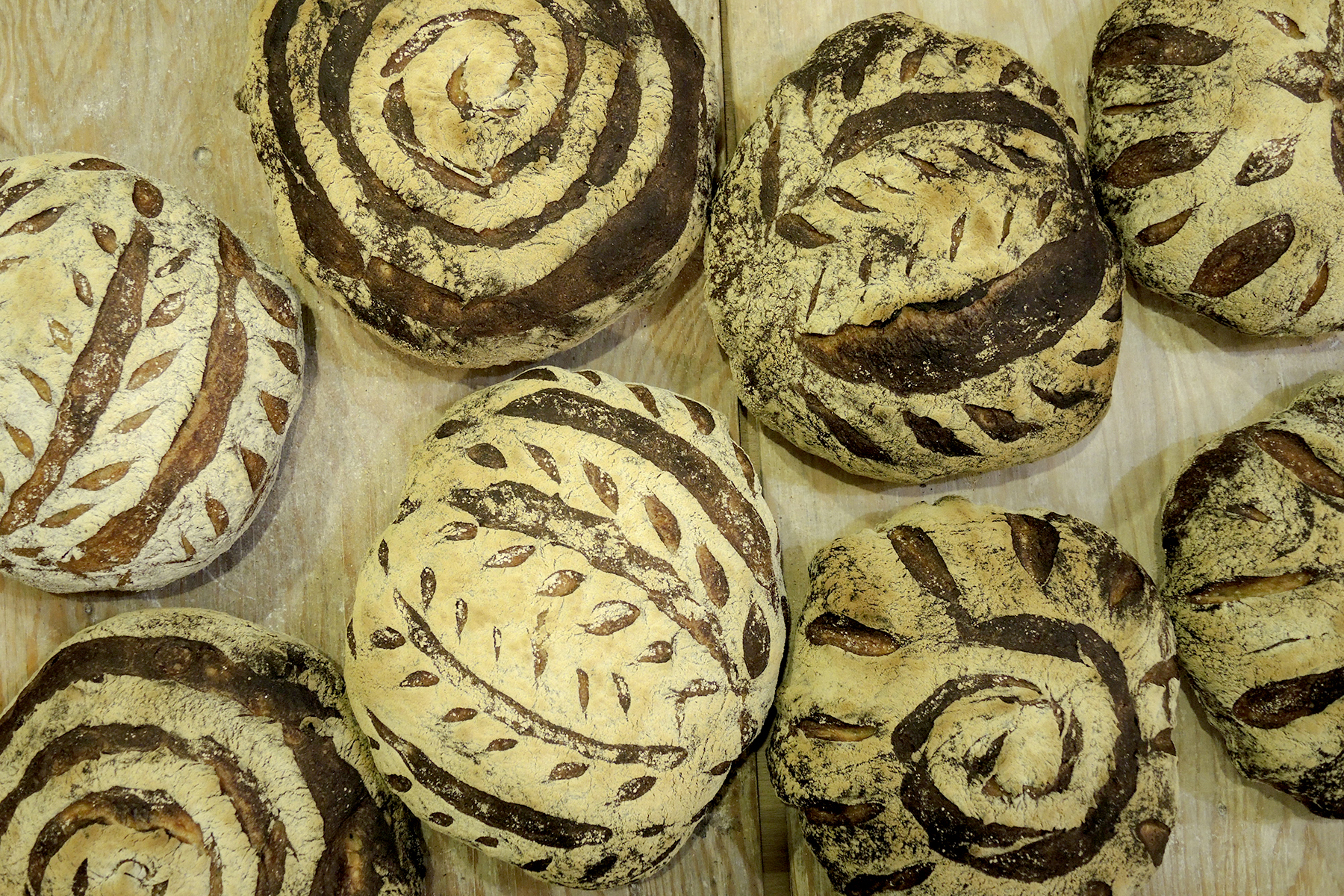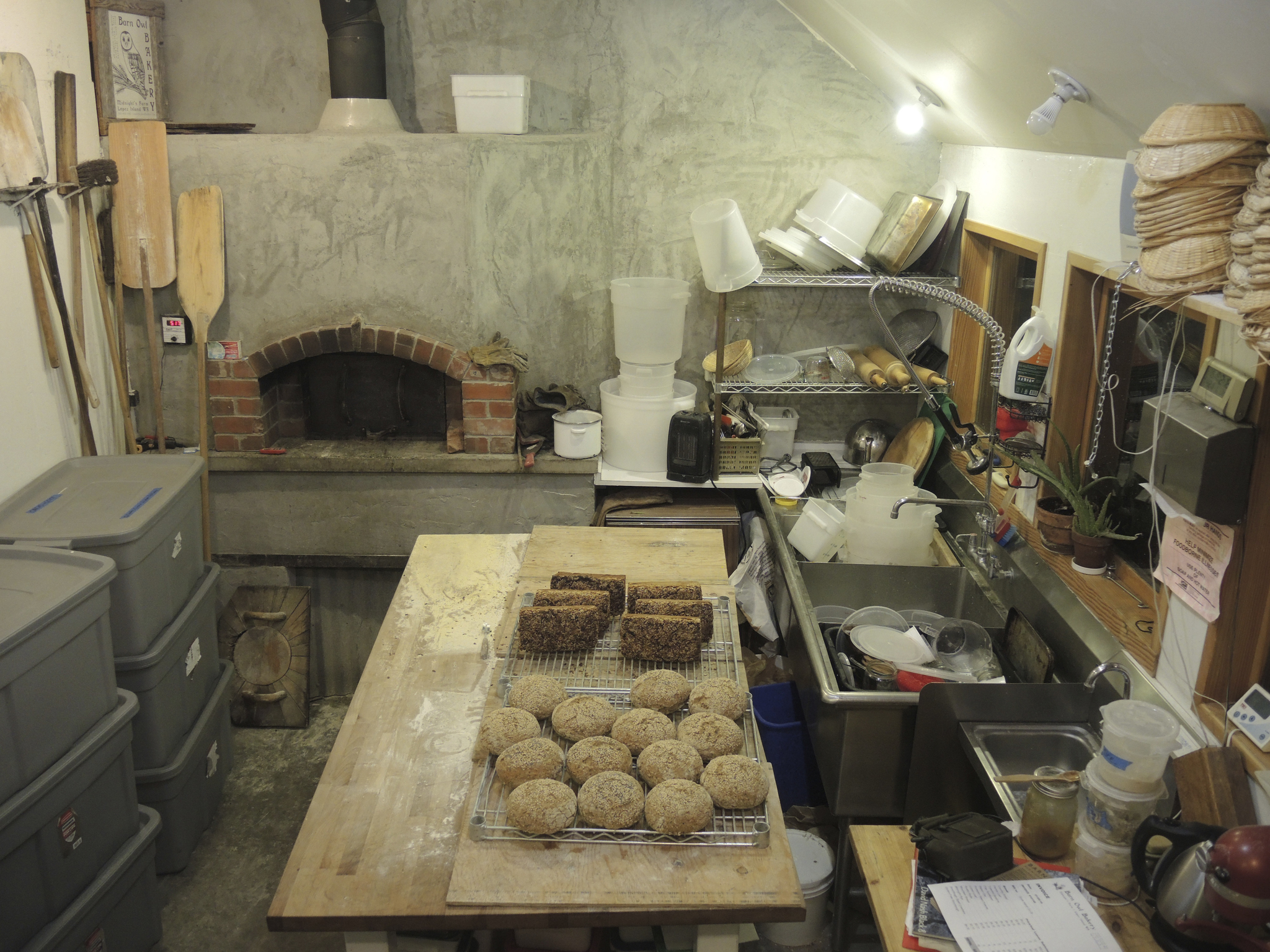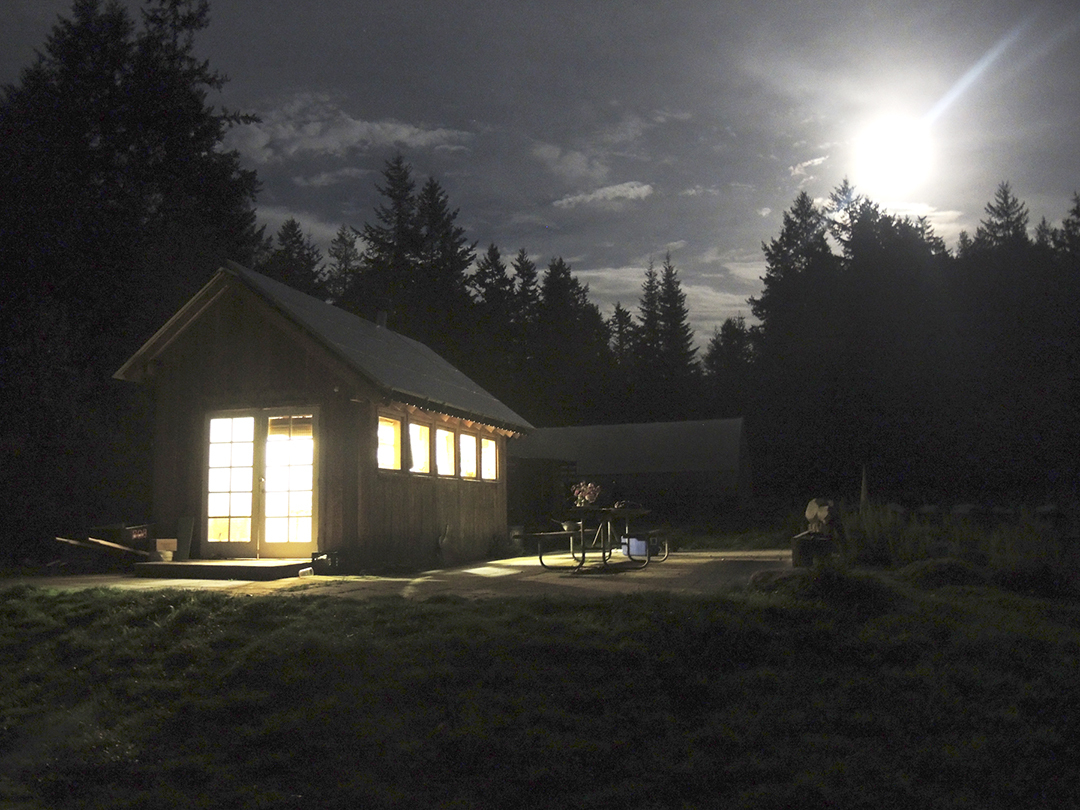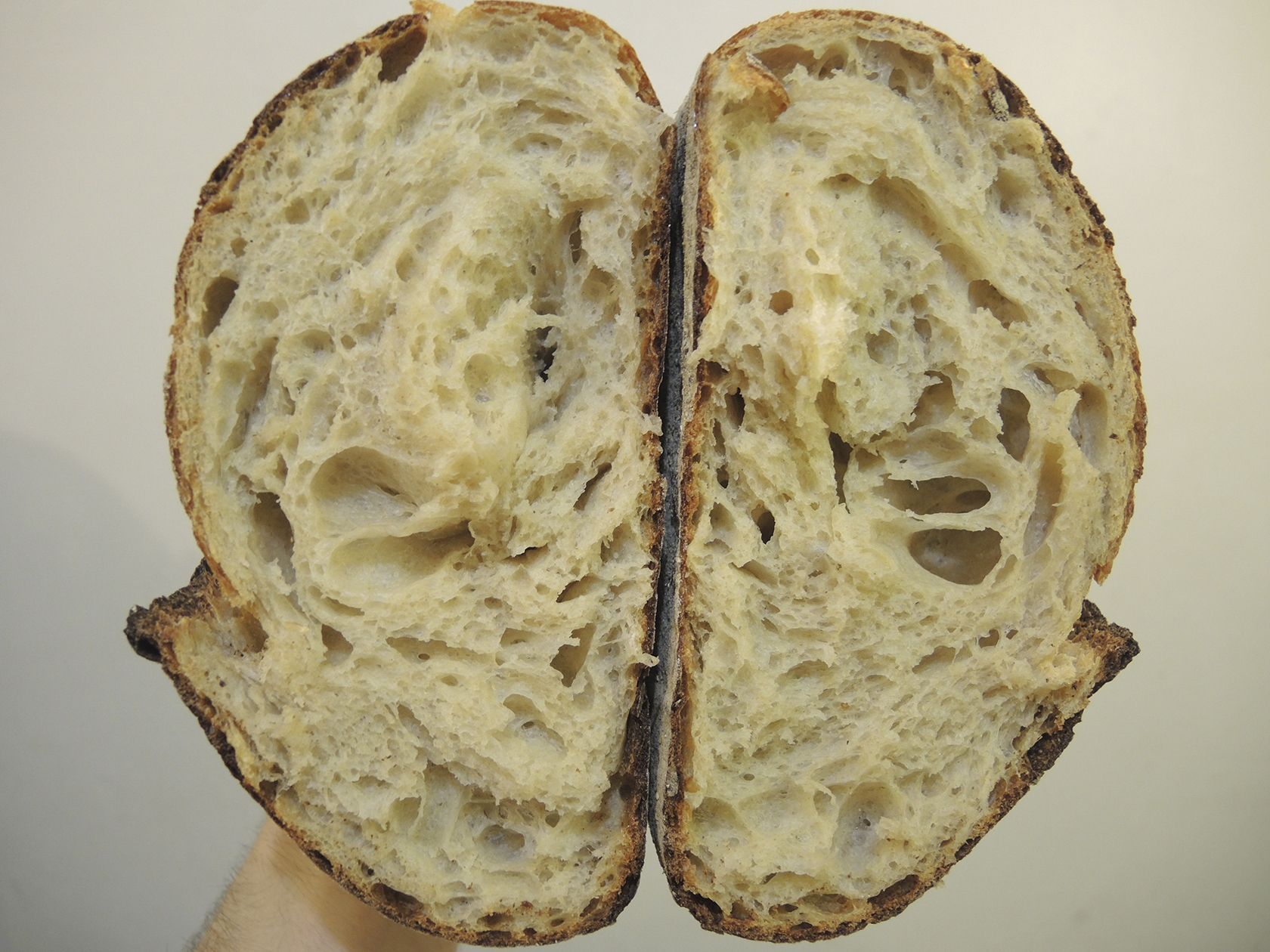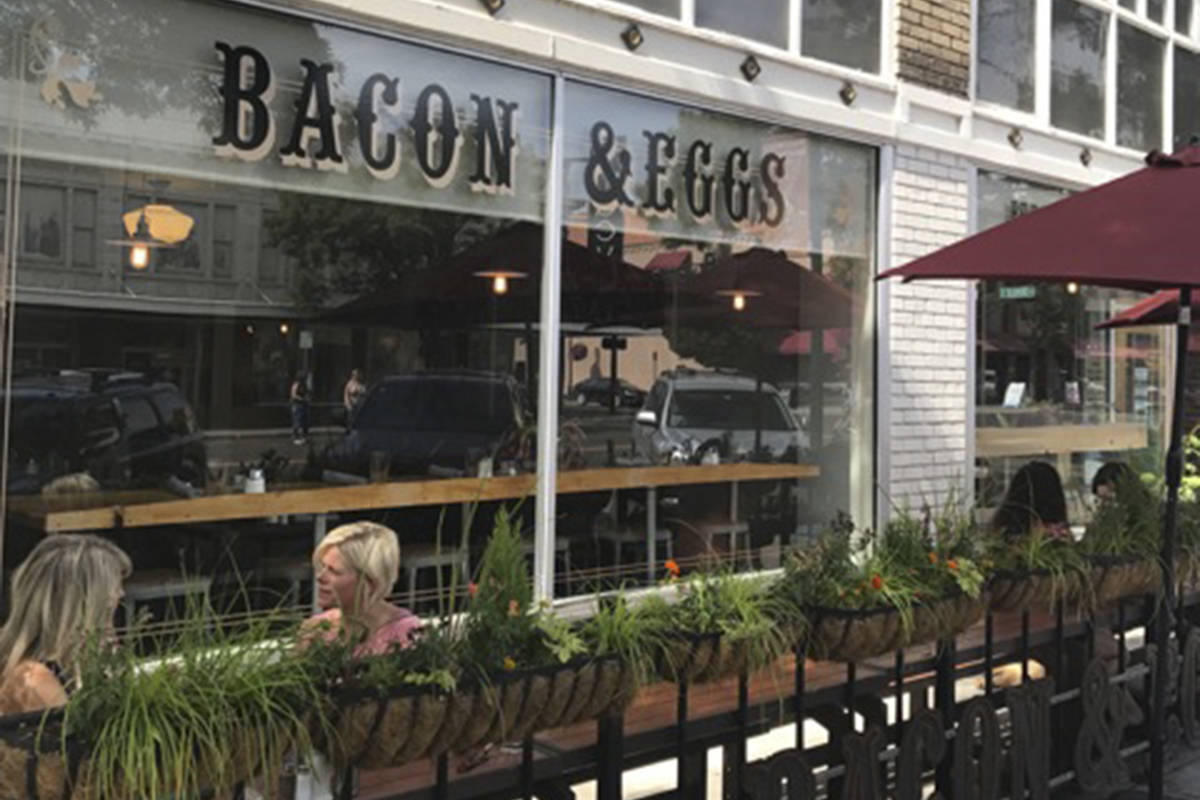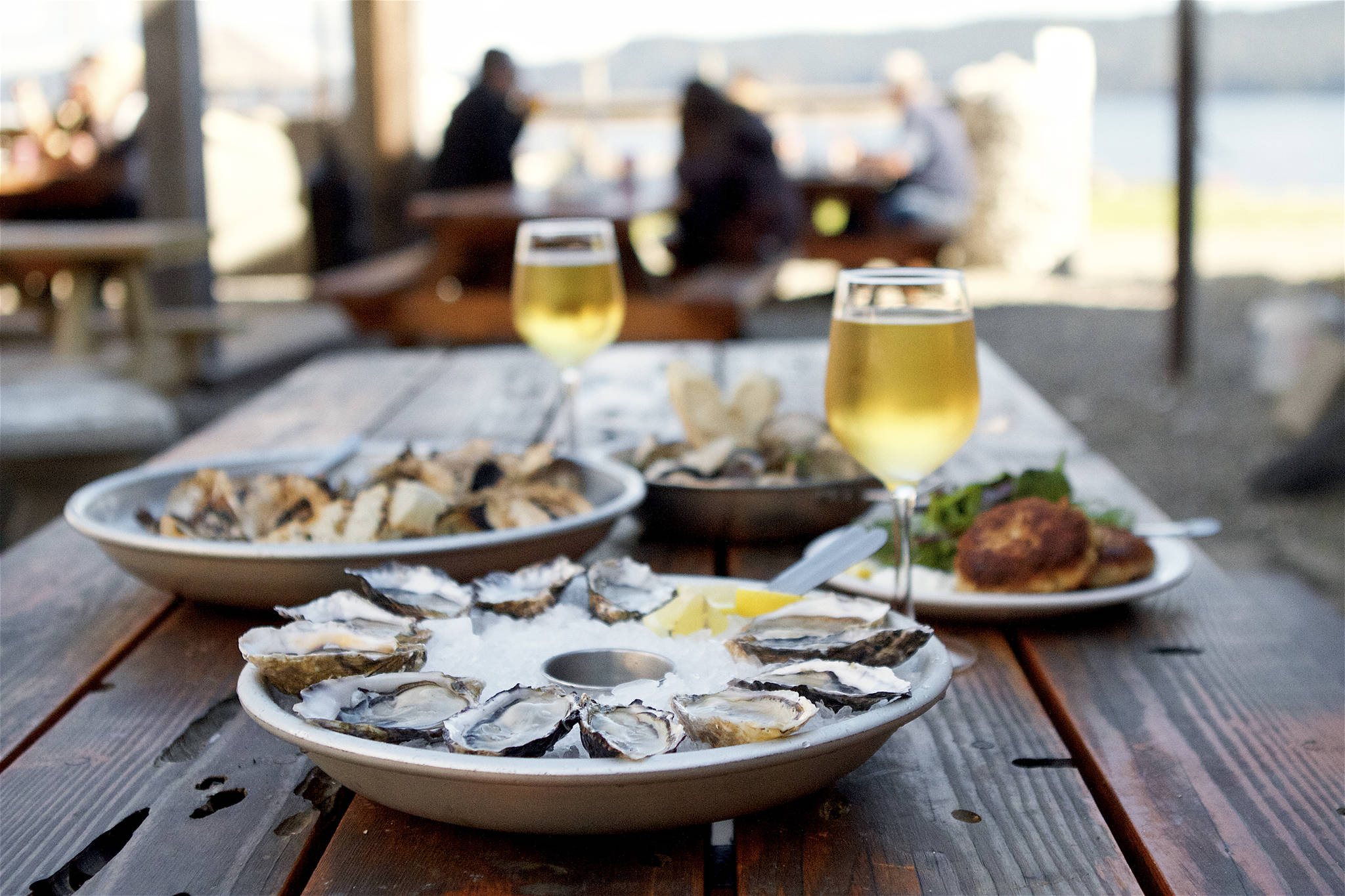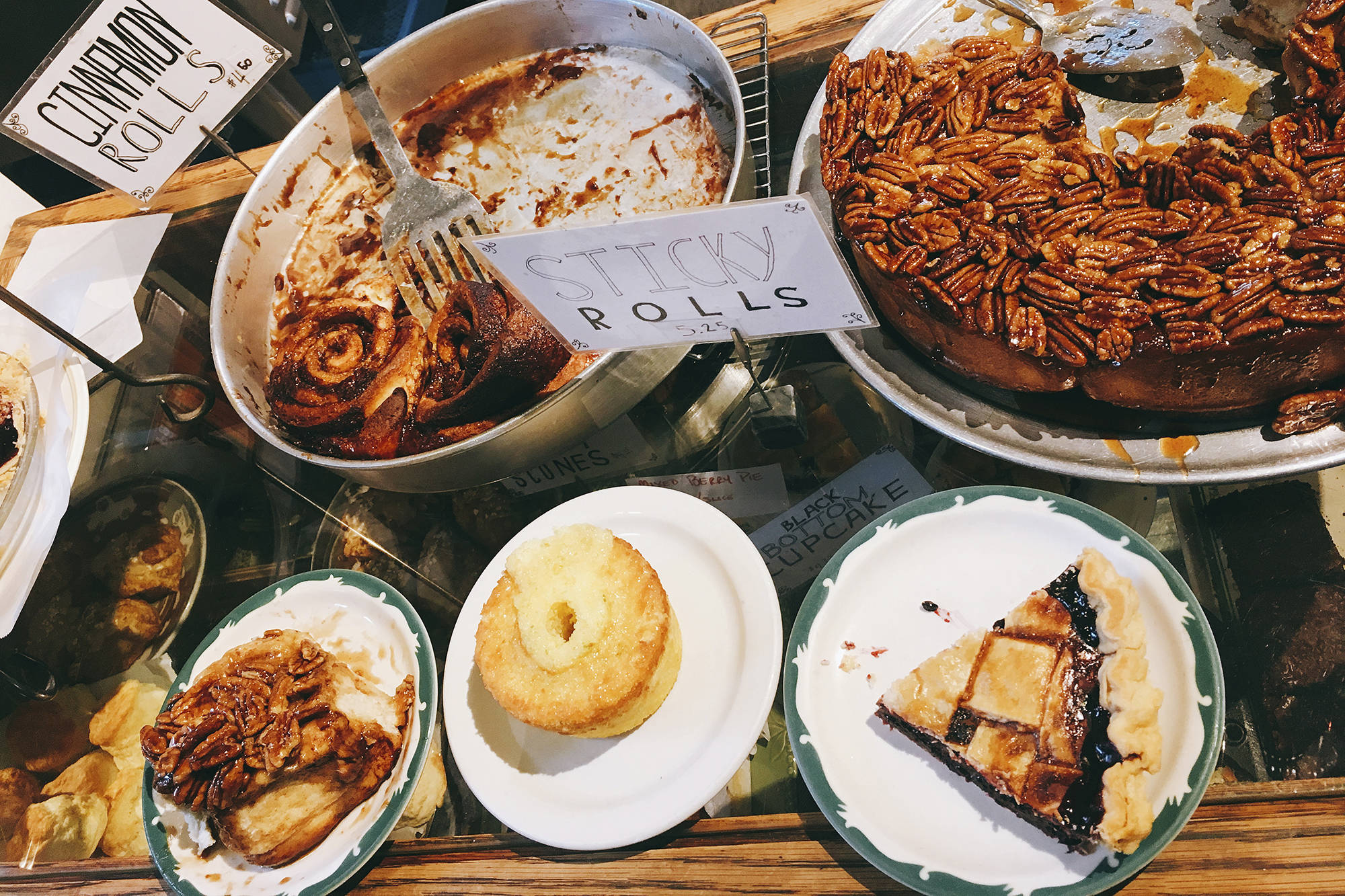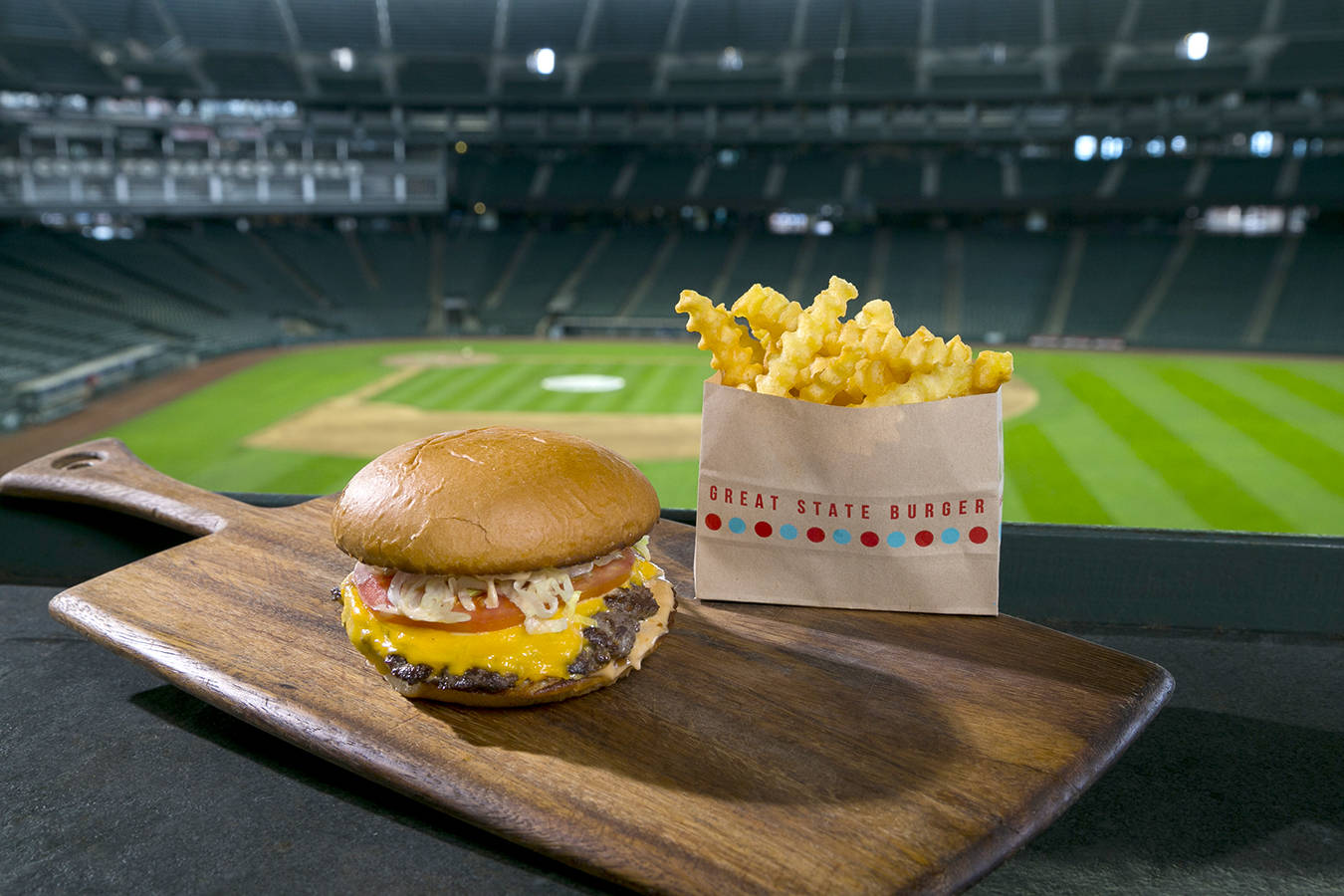Three times a week, about 36 hours before bake time, Nathan Hodges lights the wood oven in the 200-square-foot bakehouse on Lopez Island’s Midnight’s Farm. The fire burns overnight, heating the two tons of bricks to upward of 900 degrees. Then, six hours before baking, the brick is allowed to cool. When the oven is around 700 degrees, Hodges and his wife Sage Dilts start loading the bread.
“Once we start baking, we have no way of heating the oven back up,” says Dilts, who runs Barn Owl Bakery with her husband. “So over the course of the bake, the temperature will continue to drop as the baking bread sucks heat out of the hot bricks. The last load will come out when the oven is somewhere around 500 degrees.” It’s a careful, though wild, process, with everything from fermentation to the lapping of wood fire difficult to control. The result is some of the most in-demand bread in the San Juan Islands.
Currently the minuscule baking space is just a tiny blip on the sprawling farm, which also houses the farm’s owners, pigs, cattle, a compost facility, a yoga studio, and wetlands. But there they bake 600 to 700 loaves a week in the summer, sending a quarter of their bake to restaurants, including Doe Bay Cafe and Rosario Resort on Orcas Island.
The business started small—smaller, that is. Shortly after moving to Lopez, Dilts and Hodges didn’t know they would open a bakery, or that they would even stay on the island. “We came to Lopez in 2011 when Nathan had a six-week grant opportunity to do some mapping work on the island,” Dilts says. With little to do, she started baking bread in their apartment, using techniques she learned baking in Berkeley prior to the move. There she worked with a locally renowned baker, Eduardo Morell, learning about wild leaven: allowing yeast from the area to lend its character to dough, to let it take control of the fermentation. She learned about sourcing grain—the importance of hearty, whole-grain flavor and how to temper its acidity and bite.
She baked five loaves, then 10, giving them to people on the island. One of those people told her she should take her loaves to the farmers market. “It’s not like farmers markets in urban areas, in cities,” Dilts says. “On Lopez, it’s very casual. You just show up with your stuff and pay, like, $20 to buy your spot.” Each week she increased her bake. Ten loaves became 20, then 40.
She continued to bake in the tiny oven in the couple’s small barn apartment. Then another local told her he had a wood-fired oven she could use, based on those designed by Alan Scott, a mason credited with reviving the brick-oven school of baking. Dilts knew about Scott because Morell had worked with him; they shared a vision of building ovens for skilled bakers. “The idea was that they wanted to revitalize and recreate the role of a village baker,” Dilts says. “He wanted to teach people to make bread to sustain the village, and a lot of people were very inspired by that.” Naturally Dilts said yes, and was soon baking a dozen loaves at a time.
Each week that Dilts brought bread and scones to the markets, she sold out. And each week she turned more attention to sourcing the bread as locally as possible: She found whole grain on the island, integrated island-grown fruit into the pastries she began making, and changed and adapted the starter Morell had gifted her to the Lopez environment.
“Bakers, they always talk about where they got their starter from,” Dilts explains. “I got mine from Eduardo, and he got it from a French baker he worked for. It’s this generational thing, this bloodline. But once you feed it, and it gets acclimated to your area, it’s not really the same starter anymore. They go through a lot of versions, and this one is very reliable. If ever your bread isn’t right, you go back to your starter. If your starter is weird, your bread will be weird. If it’s happy and healthy, your bread is going to be, too.”
When Dilts became pregnant with their first child, Hodges took over much of the baking responsibility. Shaping loaves at home and driving them across the island to bake became burdensome, so the couple raised money to build their current bakehouse.
Together they figured out how to grow produce and herbs for their breads. They acquired fruit from friends around Lopez. Hodges planted seed for seedstock, and they enlisted farmers around the island to grow the seed for their whole grains. Once it’s grown, they buy it back. The grain is milled on the island by Island Grist. Working without commercial yeasts, the fermentation can be a bit of its own animal, but Dilts likes it that way.
They still sell at the Lopez Farmers Market where Barn Owl Bakery began, nameless, five years ago, and they still almost always sell out their 100 to 200 loaves each week. “In the summer, we can’t keep up with how much bread people can eat,” she says. Summer brings added stresses with tourists increasing the demand for bread, both on Lopez and at the restaurants that rely on Barn Owl for their bread.
Each summer they add another hour to the bake or another bread rack, but they can only make so much. Still, Dilts and Hodges continue to stoke the fire, temper the heat, and bake the bread. They feel the burn of rising prices and limited housing on the island, but they pledge not to change their process or ingredients.
